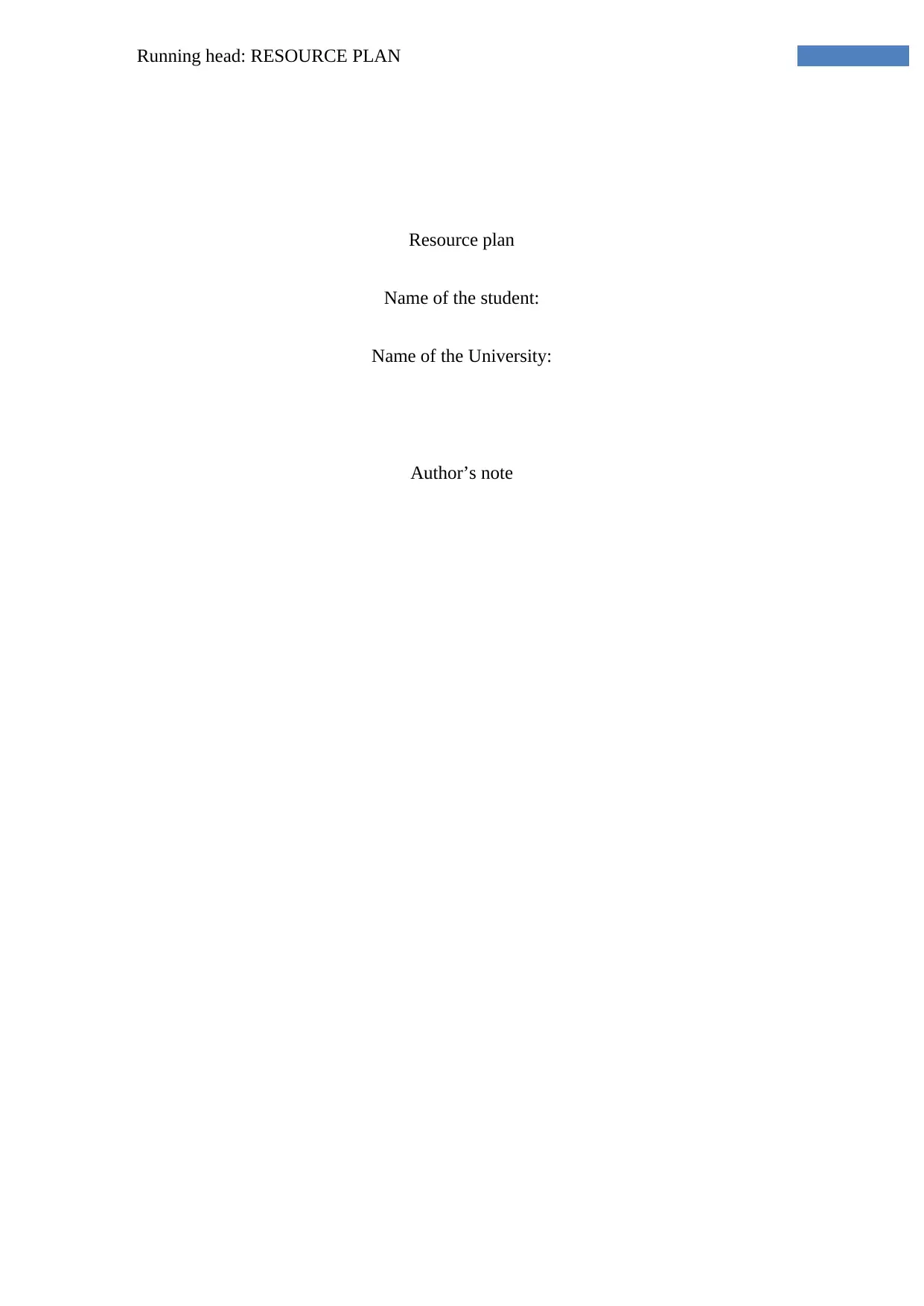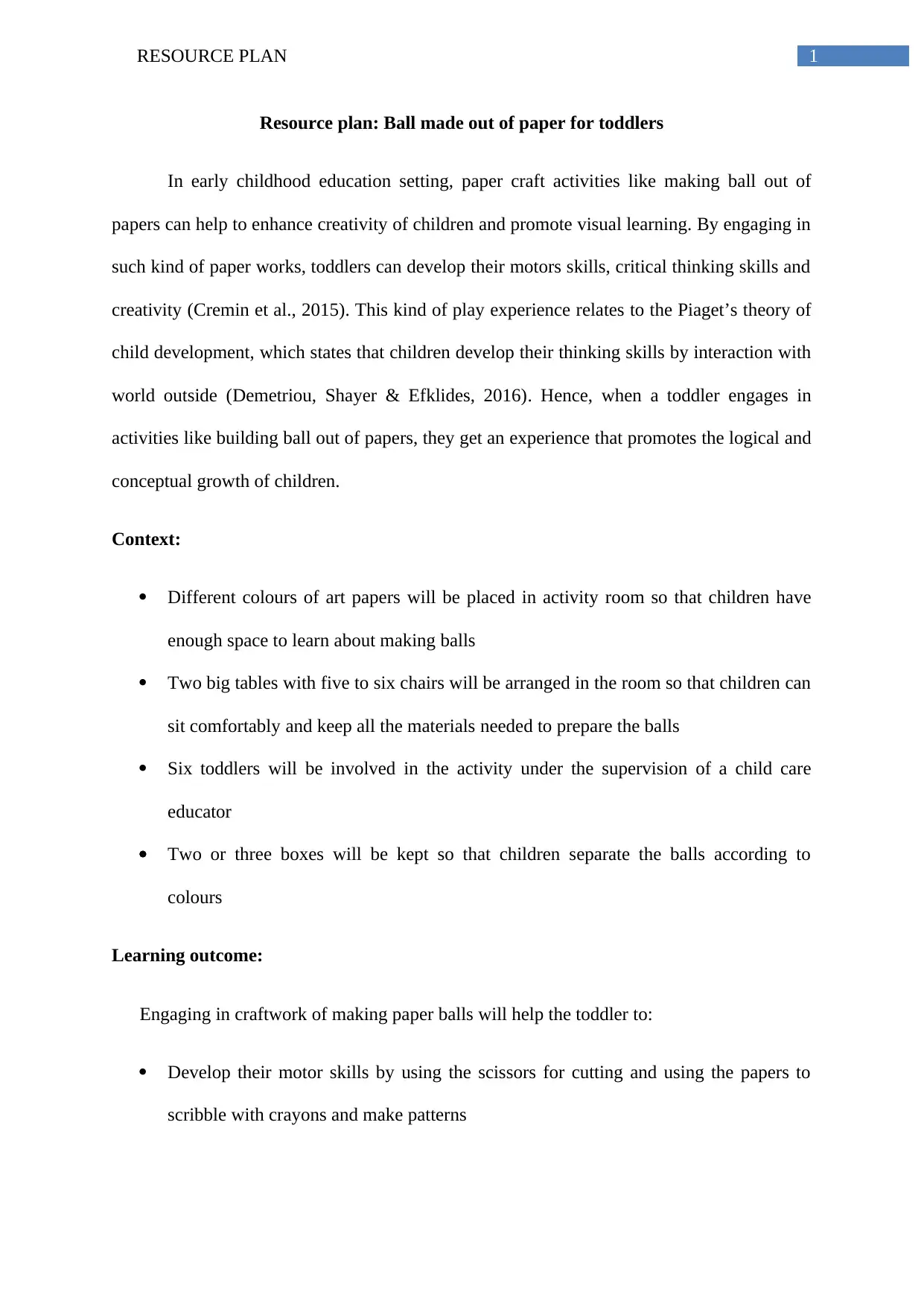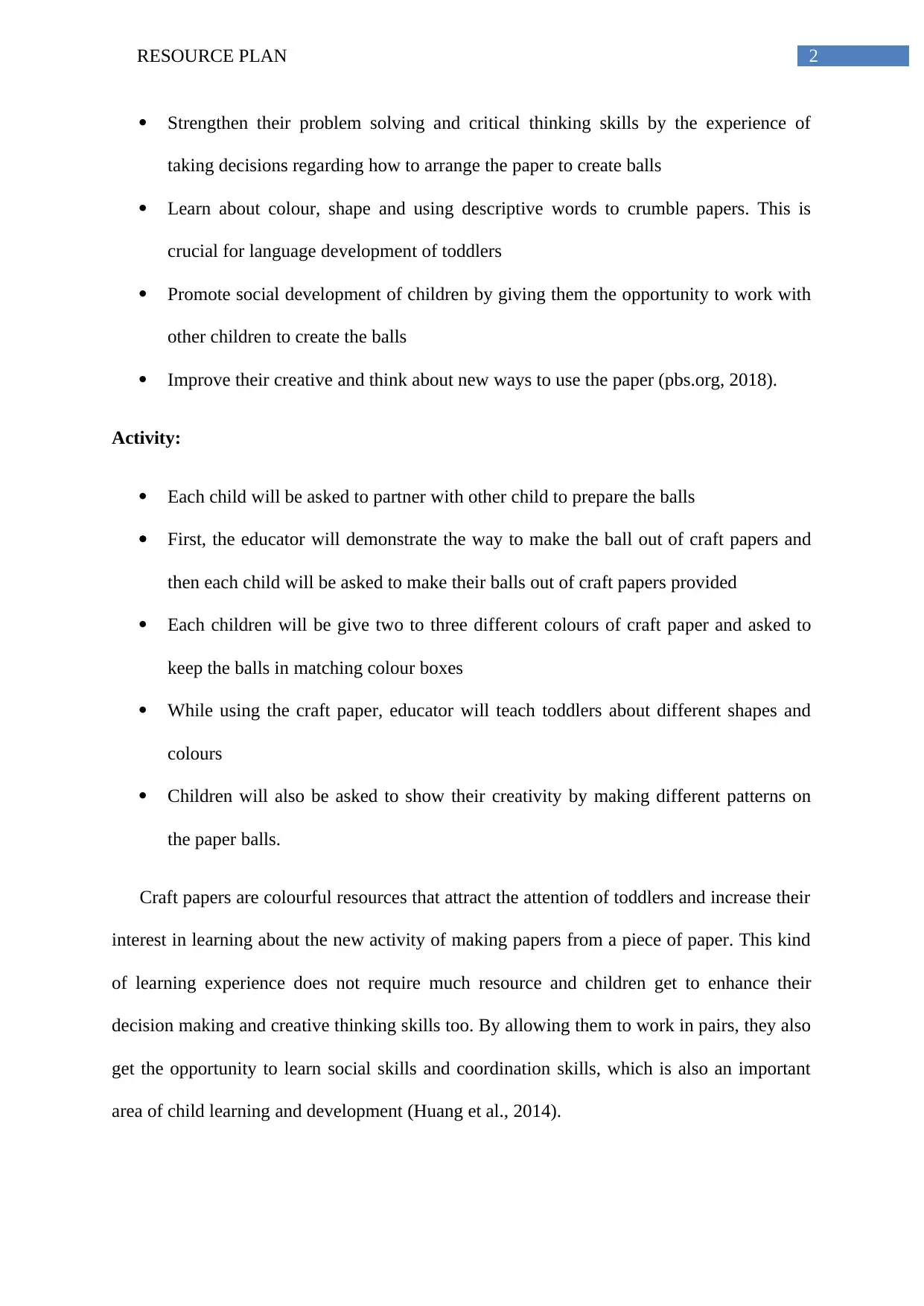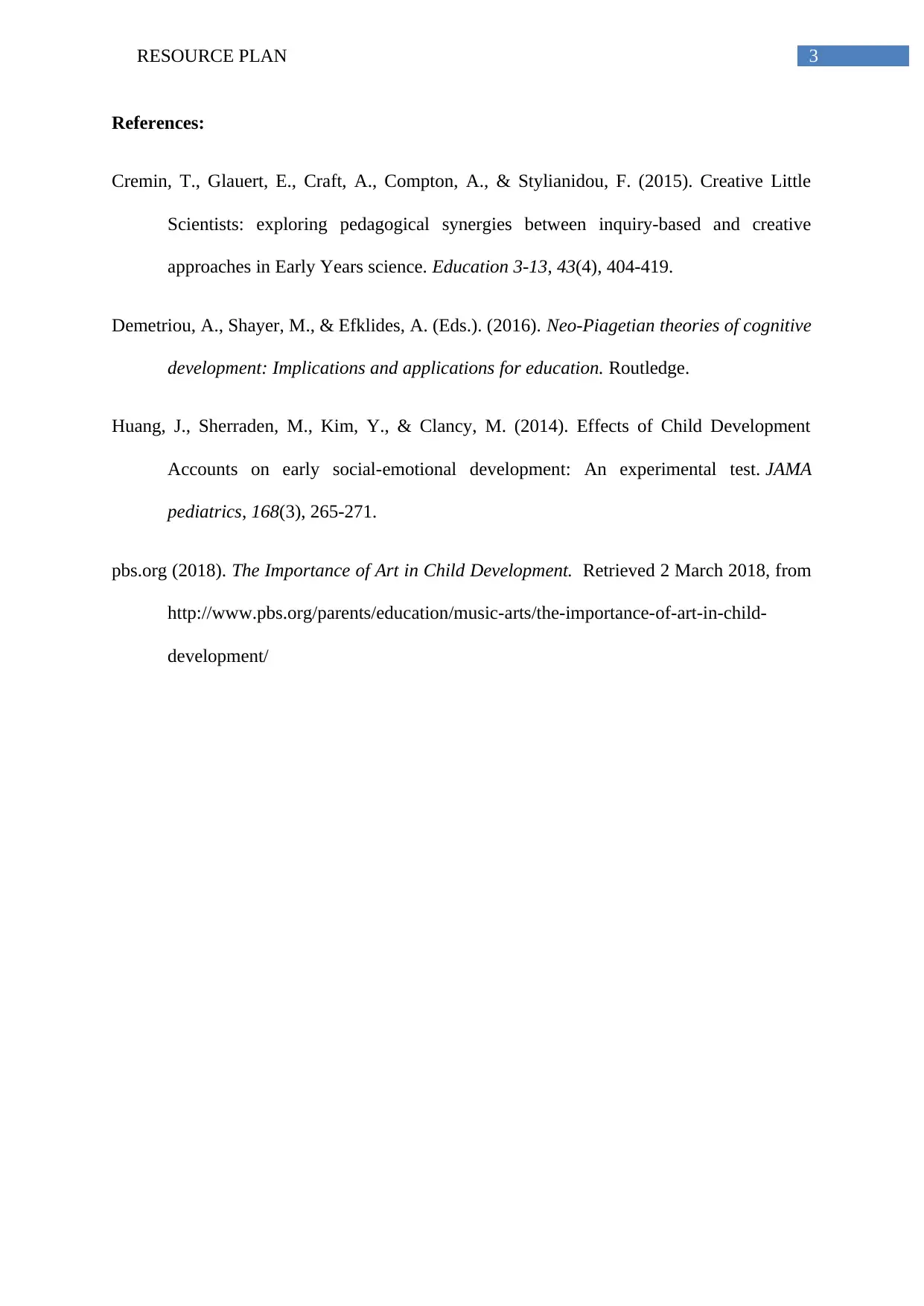Resource Plan: Enhancing Toddlers' Skills Through Paper Ball Activity
VerifiedAdded on 2021/04/17
|4
|713
|34
Homework Assignment
AI Summary
This assignment presents a resource plan for a paper ball activity aimed at enhancing the skills of toddlers in an early childhood education setting. The plan outlines the context of the activity, including the materials needed such as art papers and tables, and the learning outcomes, which focus on developing motor skills, problem-solving abilities, and creativity. The activity involves children working in pairs to create paper balls, fostering social and coordination skills. The plan references Piaget's theory of child development and emphasizes the use of colorful resources to engage toddlers and promote language development. The assignment concludes with a list of references that support the educational approach and the benefits of art in child development.
1 out of 4










![[object Object]](/_next/static/media/star-bottom.7253800d.svg)